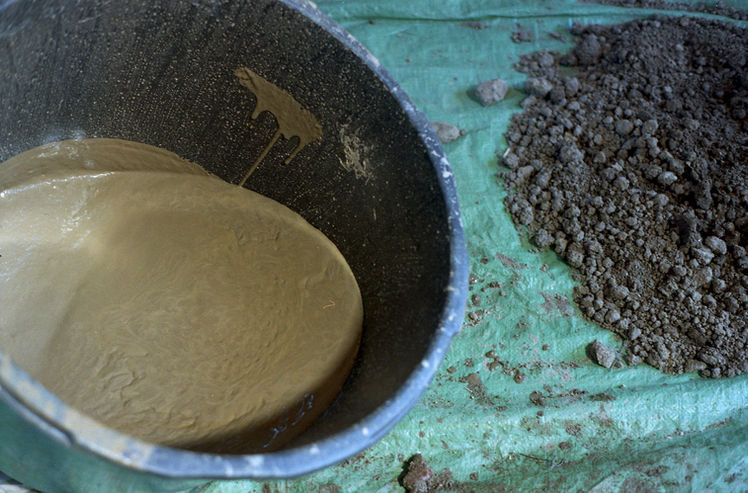
FROM EARTH TO CERAMICS
photographs by Jack Laing Aiken and Isabell Alexandra M.
texts by Jan Vagaday
Maříž already has some history in the art of ceramics. Kryštof Trubáček, who studied applied arts in Prague, brought it in and established the “Keramika Maříž” together with Jan Boháč in the 90’s. Their idea of letting people paint the ceramics made this project known among the country. This also attracted many young artists to come and earn some money with throwing pots.
While respecting this background, we would like to experiment more within the process and thus always focus on each step - from the raw material, to the clay mixture, from shaping the body to throwing the ceramics, and variety of ways of drying, firing, glazing and postproducing. All of those will be eventually covered in this article. We also acknowledge the clay as a building material related to the vernacular architecture. And so searching for the border between ceramics and building will also become a topic.

SEARCHING & PROCESSING RAW MATERIAL
Our first investigation is about looking for the right earth in the surroundings of Maříž. The soil in the village seemed to be too sandy after a couple of sedimentation tests in glass jars (more than ⅔ of sand in proportion to the clay). Therefore we started to search for more clay-rich earth around. The village is filled with ponds that have been constructed from local clay and so we got a tip for a few locations.
The difference was apparent on the touch, but still, at first we had to filter the mixture from larger particles through a sieve and then to get the result we mixed the soil (1:1) with water and in such a fluid state we ran it through an even finer sieve. This clay mash was left in a bucket over a day to sit so some of the water could be poured out and the mixture can be spared of some of the slit* on the bottom. The rest of the clay mash was then kept for about a week in a cloth bag to chill and drip the rest of the water out.
To conclude, the mixture still needs some improvements and in this state it could be used for more rudimental techniques. For throwing it was rather too sandy. We also heard about more reddish colored clays in the surroundings of Slavonice and so this research stays open.
*slit - particles of a size between sand and clay
FIRING CERMAICS IN A PIT
Taking in account the archaeological importance of ceramic evidence found not far away from Maříž (for instance Dolní Věstonice) we are interested in mimicking the very primitive techniques. Firing in a pit is one of those.
The process starts with heating up the pit with a smaller fire, where ceramics might be placed around to heat slowly up also. The fire is stopped suddenly and in the charcoal the ceramics are placed. Fire is then gradually built around the ceramics and closed above it. The whole process took about 5 hours, the firing itself ca 3 hours. At the end the ceramics are buried in the pit before the fire goes out. Through the reduction of oxygen specific surface colors are achieved.
As the ceramics haven't been dried out properly, most of them exploded. Thus creating enough fragments perfectly “mimicking” the archeological evidence.













